
The lat pulldown machine has always been my go-to for back day, but I wanted to see what other exercises could match its effectiveness. Whether it was a crowded gym, limited equipment at home, or just a desire to switch things up, I experimented with several alternatives.
Over a few weeks, I tried six exercises that target the lats, traps, and upper back, some using bodyweight, others dumbbells, and a few with resistance bands. Each one challenged me differently, pushed my form, and surprisingly, gave me results I didn’t expect.
Here are six of the best lat pulldown alternatives I’ve tried, along with my personal experience, tips for maximizing the benefits of each move, and what I’ve learned about building a strong, wide back without relying on the machine.
1. Pull-Ups
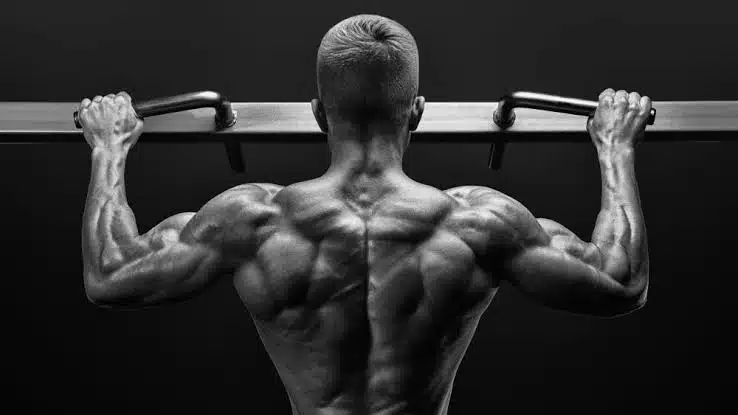
Pull-ups were the first exercise I tried as an alternative to the lat pulldown because they’re a classic back builder and require no machine, just a sturdy bar. I wanted to see if bodyweight alone could provide the same activation in my lats, traps, and upper back that I usually get from the lat pulldown. Plus, I was curious about grip variations and how they might hit different parts of my back.
How I performed It
- Started with an overhand grip, hands slightly wider than shoulder-width.
- Used a resistance band for assistance since I couldn’t do many full reps initially.
- Focused on pulling elbows down and back instead of relying solely on arms.
- I kept my shoulders engaged, core tight, and body straight—no swinging or jerking.
- Gradually reduced band assistance over several sessions.
- Tried variations: wide-grip, neutral-grip, and underhand (chin-ups) to target different back muscles.
What I felt and results
The first week, the burn was intense, especially in the upper lats and traps. It forced me to concentrate on controlled movements, which helped me develop a better mind-muscle connection. By the second week, I noticed stronger contractions and an improvement in my back strength. Pull-ups challenged me in a way the machine couldn’t—supporting my full body weight activated stabilizing muscles and improved posture. By the end of my testing period, I was doing more reps per set, and my back felt thicker and more defined.
Pro tips and variations
- Use resistance bands or an assisted machine if you can’t do full pull-ups.
- Wide grip hits outer lats, neutral grip targets mid-back, underhand emphasizes biceps.
- Focus on slow, controlled movement, especially lowering (eccentric phase).
- Once strong enough, try adding weight for extra challenge.
2. Bent-Over Barbell rows
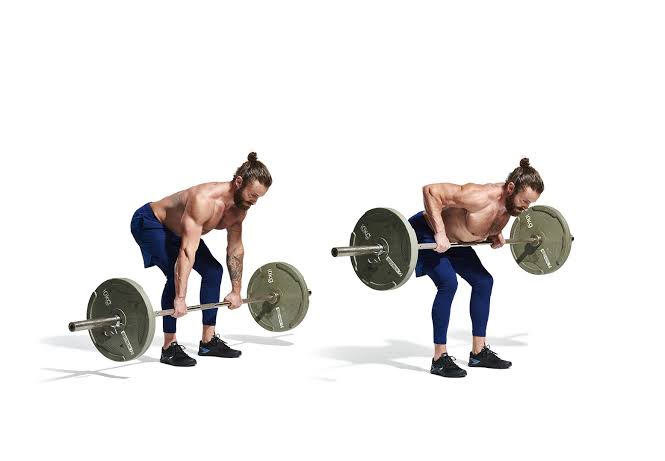
After testing pull-ups, I sought an alternative that allowed me to lift heavier loads and target my mid-back and lats in a controlled manner. Bent-over barbell rows seemed ideal because they mimic the pulling motion of the lat pulldown but engage stabilizing muscles in a different way. I was curious to see how free weights would compare to the machine and how much they could improve my overall back strength.
How I Performed It
- Grabbed a barbell with a shoulder-width overhand grip.
- Hinged at the hips, keeping my back flat and knees slightly bent.
- Pulled the barbell toward my stomach while squeezing my shoulder blades together.
- Lowered the bar slowly, maintaining tension in the lats throughout the movement.
- Focused on core engagement to prevent arching or swinging the torso.
- Did 3–4 sets of 8–12 reps, gradually increasing weight as my form improved.
What i felt and results
The moment I started, I noticed a deep contraction in my mid-back and lats that I rarely felt on the lat pulldown machine. Holding the torso steady and controlling the movement was challenging at first, but it quickly taught me how to recruit my back muscles properly. Over two weeks, my back felt thicker, my posture improved, and my grip strength noticeably increased. I also felt stronger in other compound lifts like deadlifts and bench presses, thanks to the stabilizing muscles being activated.
Pro tips and variations
- Keep your back flat and core tight to avoid injury.
- Try both overhand and underhand grips to emphasize different muscles.
- Use a slow eccentric (lowering) phase to maximize lat engagement.
- If a barbell feels too heavy, start with dumbbells or a landmine setup.
- Focus on pulling with your elbows, not your hands, to target the lats effectively.
3. Dumbbell rows
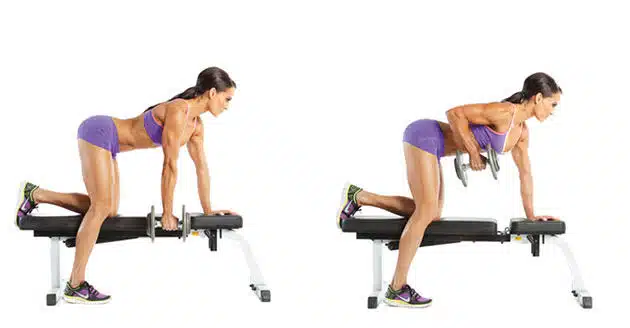
After trying pull-ups and barbell rows, I wanted an exercise that allowed for more unilateral focus. Dumbbell rows seemed perfect because I could work each side of my back independently, which helps correct muscle imbalances. Additionally, they require minimal equipment and can be performed at home or in the gym, making them a versatile alternative to the lat pulldown.
How I Performed It
- Used a flat bench for support, placing my left knee and hand on it.
- I held a dumbbell in my right hand with a neutral grip (palm facing in).
- Pulled the dumbbell toward my torso, focusing on squeezing my shoulder blades together.
- I lowered the weight slowly to maintain tension in my lats.
- Switched sides after completing the set for balanced development.
- Performed 3–4 sets of 10–12 reps per arm, gradually increasing weight as form improved.
What i felt and results
The first session immediately highlighted my weaker side, which felt fatigued faster. I noticed a deep, controlled contraction in my lats that I hadn’t felt as intensely during machine pulldowns. By week two, I could feel better activation on both sides, and my back appeared more symmetrical. The unilateral nature of dumbbell rows also improved my grip and core stability, since each side had to support itself independently. Over the testing period, I noticed my mid-back strength increased and my posture improved noticeably, especially in exercises like deadlifts and overhead presses.
Pro tips and variations
- Focus on pulling with your elbows, not your hands, to engage the lats fully.
- Keep your back flat and avoid twisting your torso.
- Experiment with incline benches if you want a slightly different angle.
- Pause at the top of each rep to maximize contraction.
- Try both palms-in and palms-facing-forward grips to target different parts of the back.
4. T-Bar rows
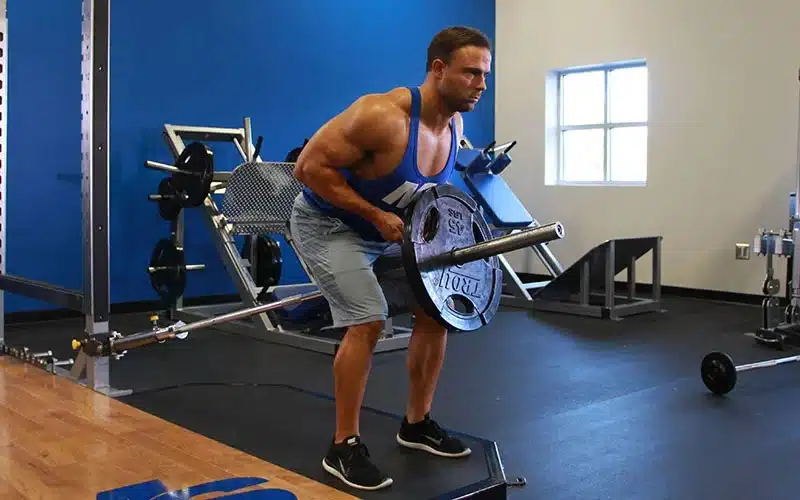
T-Bar rows were next on my list because I wanted a variation that allowed me to lift heavier than dumbbells while keeping a controlled rowing motion. I’d read that T-Bar rows are excellent for building mid-back thickness and overall back density. So it was something I wanted to compare directly with the lat pulldown. I was also curious about how using a neutral grip handle would affect my lats and traps.
How I Performed It
- Set up the bar in a landmine attachment, or wedge one end into a corner.
- Straddled the bar, bent at the hips with a flat back and knees slightly bent.
- Gripped the handle with both hands using a neutral grip.
- Pulled the bar toward my chest while keeping elbows tucked close to my body.
- Lowered the bar slowly, maintaining tension in my mid-back and lats.
- Performed 3–4 sets of 8–12 reps, progressively adding weight over sessions.
What i felt and results
The T-Bar row felt heavier and more stable than dumbbell rows, allowing me to focus on contraction without worrying about balancing each side independently. I noticed a strong activation in my mid-back and traps that I hadn’t experienced on the lat pulldown. My posture improved as my rear delts and rhomboids worked harder to stabilize the bar. Over a few weeks, my back thickness increased noticeably, and I felt stronger during other pulling exercises, like bent-over barbell rows and deadlifts. It also challenged my grip and forearms more than I expected, which was a welcome bonus.
Pro tips and variations
- Keep your chest slightly lifted and back flat to avoid rounding.
- Focus on pulling with your elbows, not your hands, to target lats effectively.
- Adjust grip width: narrow for mid-back focus, wider for outer lats.
- Slow the lowering phase to maximize muscle tension.
- If you don’t have a T-Bar setup, a landmine attachment with a V-handle works well too.
5. Inverted rows
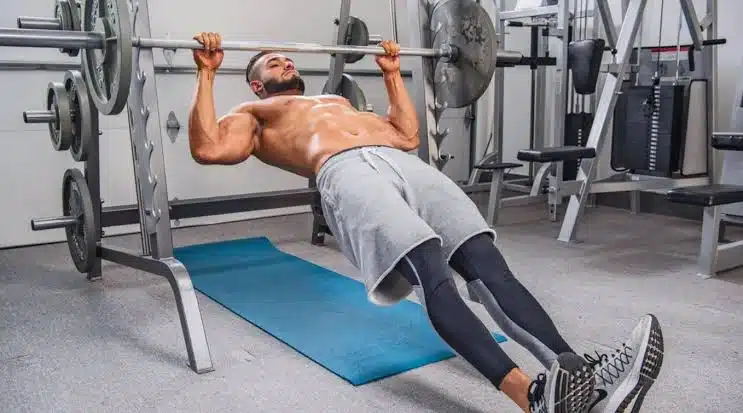
Inverted rows caught my attention because I wanted a bodyweight alternative that was less intense than pull-ups but still targeted my entire back. They’re also versatile. I could do them at home with a barbell on a squat rack or with a suspension trainer. I was curious to see if a horizontal pulling motion could provide the same engagement for my lats and traps that I usually get from vertical pulls, such as lat pulldowns.
How I Performed It
- Set a barbell on a squat rack at about waist height.
- Lay underneath, grabbing the bar with an overhand grip slightly wider than shoulder-width.
- Kept my body straight from head to heels, heels on the ground.
- Pulled my chest toward the bar while squeezing my shoulder blades together.
- Lowered slowly back down to maintain tension.
- Performed 3–4 sets of 10–15 reps, adjusting foot placement to change difficulty (closer feet = easier, farther = harder).
What i felt and results
The first time I tried inverted rows, I was surprised by how much my mid-back, traps, and rear delts were engaged. Unlike pull-ups, I could easily control the difficulty, which allowed me to focus on proper form and a strong mind-muscle connection. Over the course of a couple of weeks, I noticed increased strength in horizontal pulling movements and an improvement in my posture. My lats and traps felt more defined, and I experienced improved scapular control during other exercises. The exercise also challenged my core and hamstrings, which I didn’t expect but appreciated.
Pro Tips and Variations
- Keep your body straight—avoid sagging hips or bending knees unless modifying difficulty.
- Experiment with different grips: wide, narrow, overhand, or underhand.
- Slow the lowering phase to increase muscle engagement.
- Elevate your feet on a bench or box to make the exercise more challenging.
- Use suspension straps (TRX) if no barbell is available; they allow for a better range of motion and variation.
6. Resistance band Lat pulldown / seated rows
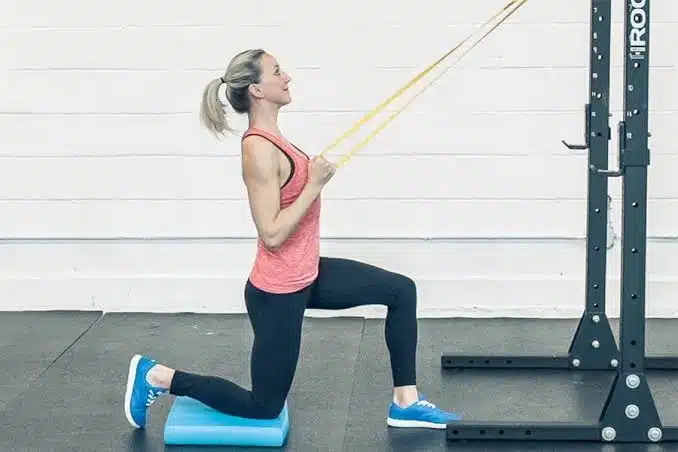
I wanted a lat pulldown alternative that I could do anywhere, at home, in a small gym, or even outdoors. Resistance bands promised portability, variable resistance, and a surprisingly effective way to work my lats, traps, and upper back. I was curious to see if a band could replicate the feeling of the lat pulldown machine without requiring heavy equipment.
How I Performed It
- Anchored a resistance band overhead for lat pulldowns or in front of me for seated rows.
- For lat pulldowns, I grabbed the band with a wide grip and pulled it down toward my chest.
- For seated rows, I sat on the floor or bench, extended my legs, and pulled the band toward my torso.
- Focused on pulling with my elbows while squeezing my shoulder blades together.
- Lowered the band slowly, keeping tension in the muscles at all times.
- Performed 3–4 sets of 12–15 reps, adjusting band thickness or grip to increase resistance.
What i felt and results
Initially, I underestimated the challenges of bands. The resistance increases as you pull, which makes the last few reps surprisingly tough. I felt a deep contraction in my lats and traps that reminded me of the lat pulldown machine. Over a couple of weeks, I noticed improved muscle endurance, stronger scapular control, and a fuller back pump. The versatility of bands allowed me to hit my back from different angles, adding variety to my workouts while keeping things low-impact and joint-friendly.
Pro tips and variations
- Use bands of different resistance levels to progressively overload your muscles.
- Maintain controlled movements, especially on the return phase, to keep tension on the lats.
- Mix grips: wide for outer lats, close for mid-back focus.
- Try both lat pulldown and seated row positions to hit the muscles differently.
- Anchor the band securely to prevent slipping or snapping during exercise.
Key takeaways
After testing these six lat pulldown alternatives, a few lessons stood out:
- Bodyweight Exercises Are Powerful: Pull-ups and inverted rows proved that you don’t need heavy machines to build back strength. Bodyweight variations allow for control, proper form, and scalable difficulty.
- Free Weights Enhance Muscle Engagement: Bent-over barbell rows, dumbbell rows, and T-Bar rows helped me lift heavier loads, improve mid-back thickness, and engage stabilizing muscles that the machine doesn’t always target. Free weights also challenge your core and posture.
- Unilateral Movements Correct Imbalances: Dumbbell rows highlighted my weaker side and allowed me to focus on symmetry, which is something machines often mask.
- Resistance Bands Are Versatile and Accessible: Bands proved to be surprisingly effective, portable, and easy on joints while still activating lats, traps, and rear delts. They’re perfect for home workouts or adding variety to a gym routine.
- Form and Mind-Muscle Connection Matter More Than Weight: Across all exercises, I noticed that focusing on elbows, controlled motion, and squeezing shoulder blades made a bigger difference than simply increasing load.
- Variety Promotes Full Back Development: Switching grips, angles, and resistance methods ensures different parts of your lats, traps, and rhomboids get worked, preventing plateaus.
These insights show that you can get an effective back workout without relying solely on the lat pulldown machine, whether you’re at home, traveling, or just mixing up your routine.
Wrap up!
Testing these six alternatives gave me a clear perspective: the lat pulldown machine is convenient, but it’s far from the only way to build a strong, wide back. Pull-ups challenged my bodyweight strength and mind-muscle connection, while bent-over barbell and dumbbell rows emphasized controlled lifting and muscle thickness. T-Bar rows offered heavy-load stability, inverted rows provided accessible bodyweight resistance, and resistance bands brought versatility and portability.
The most important takeaway for me was that form, control, and consistent engagement of the back muscles matter far more than equipment. Each alternative had unique benefits, and combining several in a routine ensures balanced development.
Whether you have access to a full gym or just a bar and some bands at home, these exercises can replace or even improve upon the lat pulldown experience. I now have a variety of go-to options that keep my back workouts challenging, effective, and interesting. If you’re looking to strengthen your lats, traps, and entire back, you don’t need a machine—you just need the right alternatives and proper technique.











